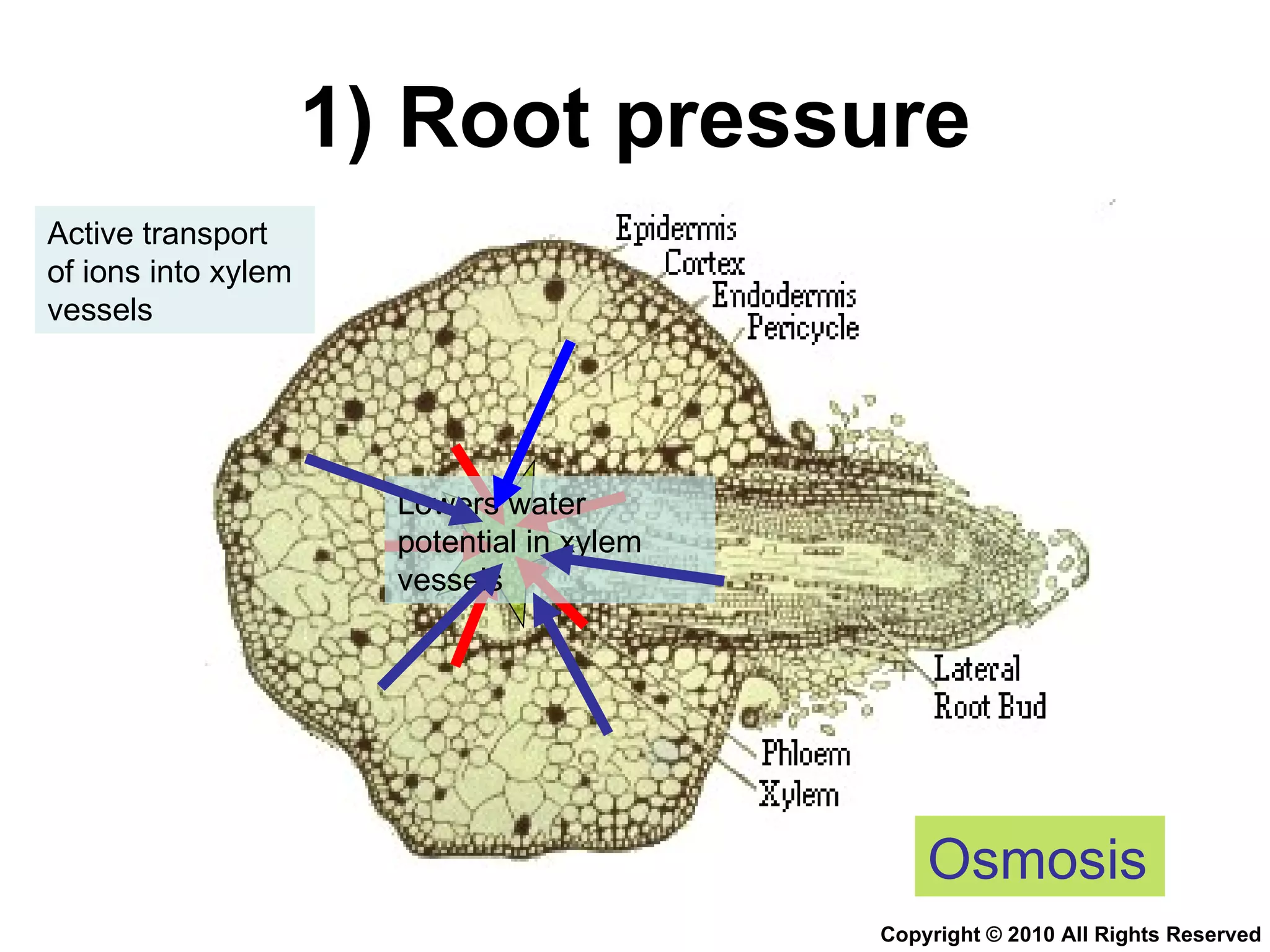There are three main mechanisms by which plants transport water and nutrients upwards against gravity: 1) Root pressure, 2) Capillary action, and 3) Transpiration pull. Capillary action is caused by the properties of adhesion and cohesion in water molecules. Transpiration pull is the suction force created by evaporation of water from leaves that pulls water up through the xylem vessels. Factors like humidity, temperature, wind, and leaf size affect the transpiration rate.























